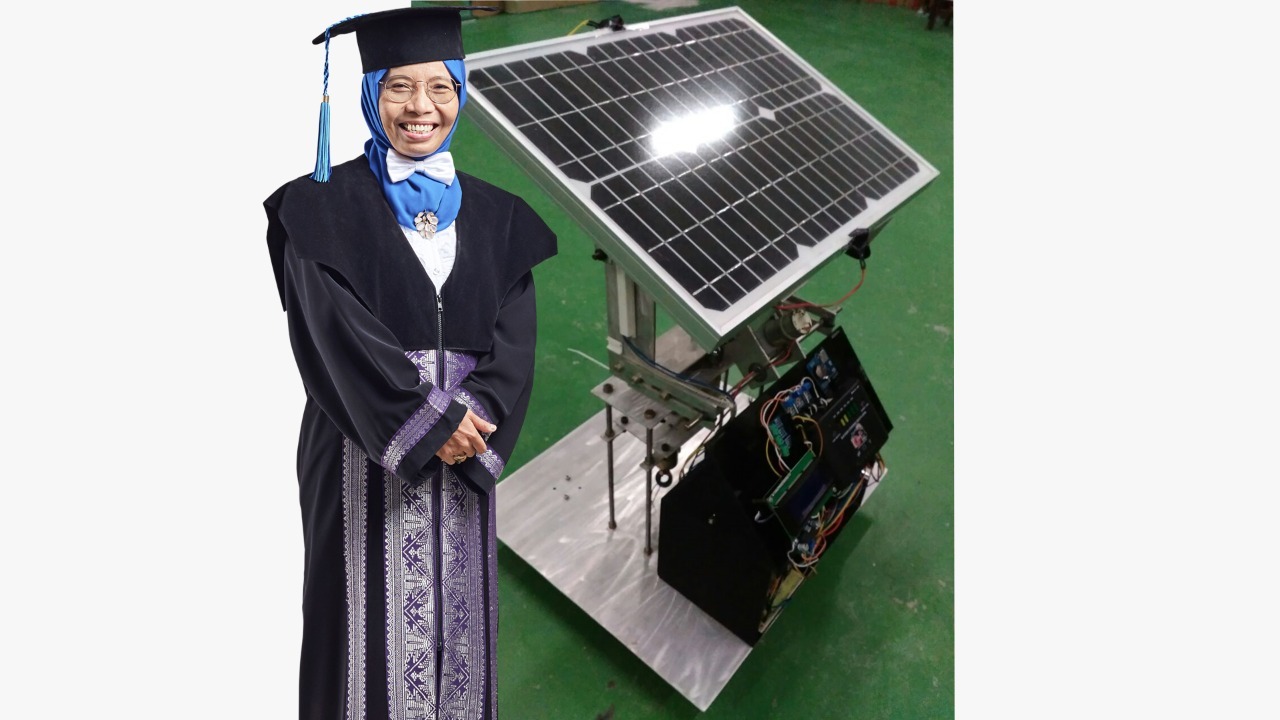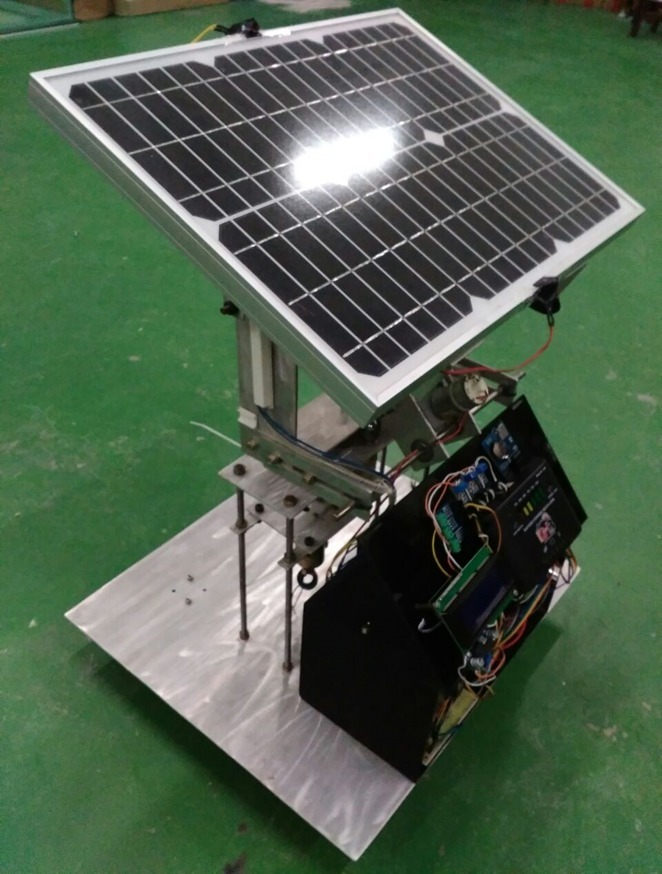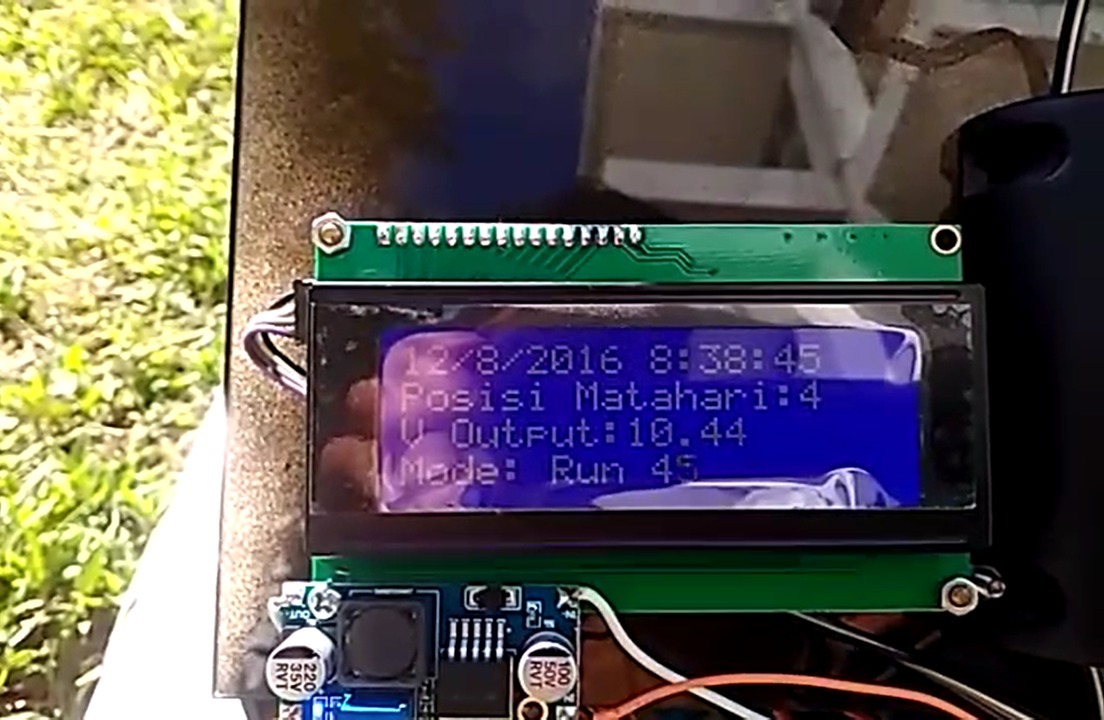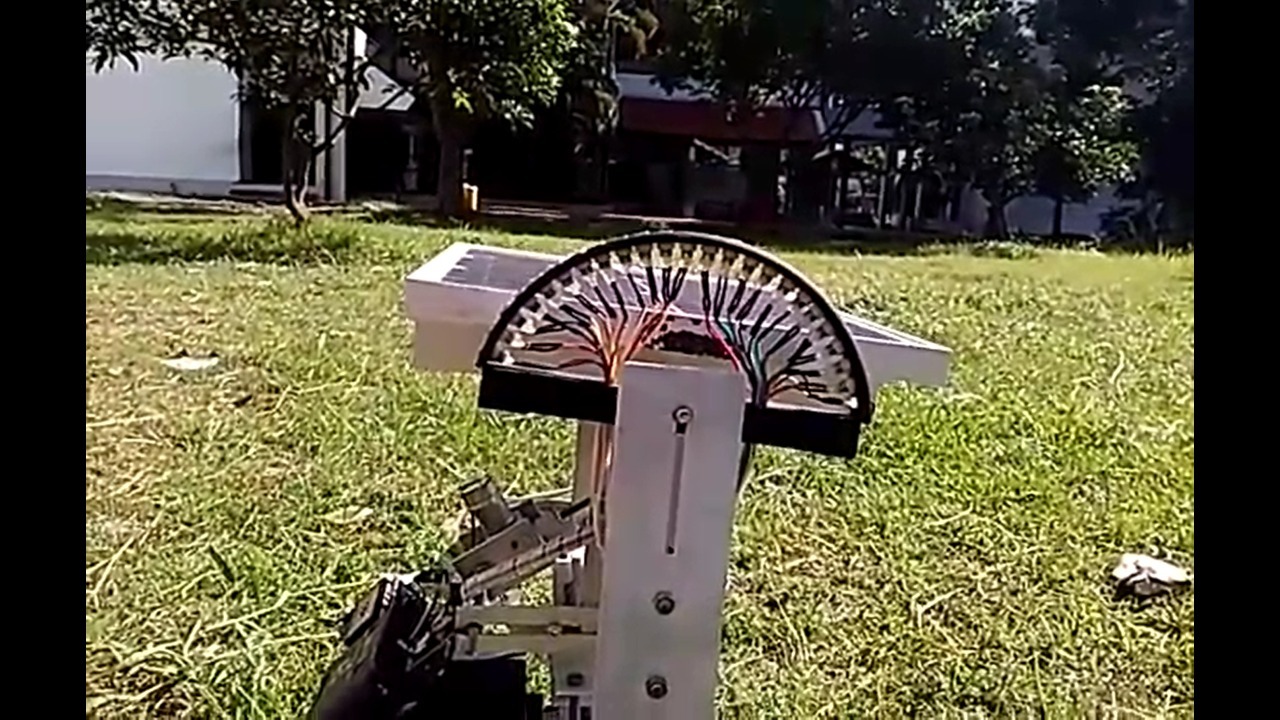ITS Governorate Increases EBT Exploration Efficiency Through Applied Mathematics Applications

Prof. Dr. Dra Mardlijah MT, professor of Mathematics ITS, with her prototype T2FSMC solar tracker
ITS Campus, ITS News – During the current energy crisis, especially electricity, Indonesia, with all its potential, actually has an excellent opportunity to produce alternative energy that is more efficient and sustainable. Prof. Dr. Dra Mardlijah MT, professor of the 135th Institute of Technology Sepuluh Nopember (ITS), strives to form a more efficient system to explore renewable energy through her research.
Mardlijah admitted that he had felt her concern about the mix of energy use since 2009. Meanwhile, as an expert in applied mathematics, Mardlijah is also diligent in conducting research, starting from running several simulations until it ends as it is now, producing a one-axis solar tracker prototype designed based on mathematical calculations.
“Applied mathematics is a branch of mathematics which has a role in providing alternative solutions to real problems that are close to life,” said the professor who was born in Malang. In this case, Mardlijah applied mathematical calculations to modify the solar panels, which generally still cause chattering when sliding mode control (SMC) is installed.
According to the Proportional Integral Derivative (PID) Controller System, the SMC in question is a solar tracker controller that works not conventionally. Existing studies show that solar panels will be able to absorb energy from sunlight massively when the position between the source (the sun) is perpendicular to the plane of the panel.
However, continued Mardlijah, it is unfortunate that chattering is still a side effect of using SMC, as is the case when using PID. Therefore, even though PID is more uncomplicated in construction, it is still necessary to improve the controller work so that errors between the reference and the system output can be further minimized.

The solar tracker prototype with T2FSMC was the idea of Prof. Dr. Dra Mardlijah MT, ITS Mathematics professor.
“If PID determines proportional, integral, and derivative constants for that, what I further develop is a method that utilizes a firefly algorithm,” said Mardlijah, who was officially confirmed as ITS professor on March 31.
The purpose of implementing the firefly algorithm in research conducted by the Deputy Dean of the Faculty of Science and Data Analytics (FSAD) is to obtain the best function and gain scale in determining the desired value or position in the shortest possible time. This determination is based on the Integral Time Absolute Error (ITAE) weight so that the expected solar tracker angle is realized.
An algorithm is a form of optimizing the Type 1 Fuzzy Sliding Mode Controller (T1FSMC) controller. As a result, a Type 2 FSMC (T2FSMC) was created, which performed better on solar panel drive control. “We know this after carrying out the simulation stage and comparing the methods we have innovated with conventional methods,” he explained.

A portrait of the performance of the solar tracker, the idea of the ITS professor, Prof. Dr. Dra Mardlijah MT, showing the output voltage of the captured sunlight at a particular position
Previously, the woman wearing glasses continued, the conventional PID controller-based solar tracker still gave rise to the chattering phenomenon and had not been able to accommodate any disturbances or parameter changes in the system. Now, the T2FSMC being developed has been able to reduce the chattering phenomenon as much as possible and solve the problems that arise (robust).
Mardlijah mentioned another advantage; the method he thrived showed better performance when viewed from the amount of absorption voltage seen in the existing equipment battery. As a form of continued innovation, Mardlijah collaborated with the FSMC and T2FSMC, which was subjected to the Interval Type 2 Fuzzy Logic Controller (IT2FLC) control logic on the solar tracker.
“However, of course, the implementation of this innovation will not be as easy as expected without collaboration with other researchers,” said the graduate of ITS Control System doctoral education. She also revealed that she has collaborated since starting this research, including with a faculty colleague, Prof. Dr. Subiono MS, who helped analyze systems and system characteristics in the form of state space.

A portrait of the solar tracker prototype, the idea of ITS professor, Prof. Dr. Dra Mardlijah MT, when tested in the field
She also expressed her gratitude to the Surabaya State Shipping Polytechnic (PPNS), who wanted to collaborate and assist in the production process of prototypes of their ideas. “So that in the future the development can be aligned, we will do it gradually, not only in terms of method,” she added.
Mardlijah’s concern for her surroundings, especially in the field of energy, does not only focus on solar power. The woman born on January 14, 1967, also saw the potential of microalgae in Indonesia that could be considered an alternative to bioenergy. As a mathematician and member of the Center for Energy Studies, she has researched this area and conducted model analysis and optimization of microalgae growth as another effort to overcome the energy crisis.
Mardlijah hopes that her sensitivity and persistence can be implemented and bring benefits to humankind. As is currently the case, Mardlijah is also continuing research on other methods that are predicted to realize a two-axis solar tracker. “So, the absorption capacity of solar panels can increase faster,” she continued.
For this reason, so that the prototype of her research results can be implemented and developed, even more, Mardlijah asked for support to carry out further analysis and studies that discussed other aspects related to the feasibility study of her solar tracker idea. (far/ITS Public Relations)
Reporter: Kafa ‘Aisyana Ni’mah
Related News
-
ITS Collaboration with BPBD East Java, Launching VR Disaster Simulation
ITS Campus, ITS News — Supporting anticipation of disasters and continuing to educate the public, Institut Teknologi Sepuluh Nopember
April 05, 2021 18:04 -
Supporting the Implementation of Innovative Ideas, ITS and IYSA Hold International Competition
ITS Campus, ITS News — Institut Teknologi Sepuluh Nopember (ITS) has once again proven its commitment to supporting the
April 05, 2021 18:04 -
ITS Maintains Informative Qualification for Five Consecutive Years at KIP Awards
ITS Campus, ITS News — Institut Teknologi Sepuluh Nopember (ITS) has once again successfully maintained its Informative Qualification predicate
April 05, 2021 18:04 -
ITS Strengthens Smart Eco-Campus through UI GreenMetric 2024
ITS Campus, ITS News — Institut Teknologi Sepuluh Nopember (ITS) has once again demonstrated its commitment to environmental concern
April 05, 2021 18:04
